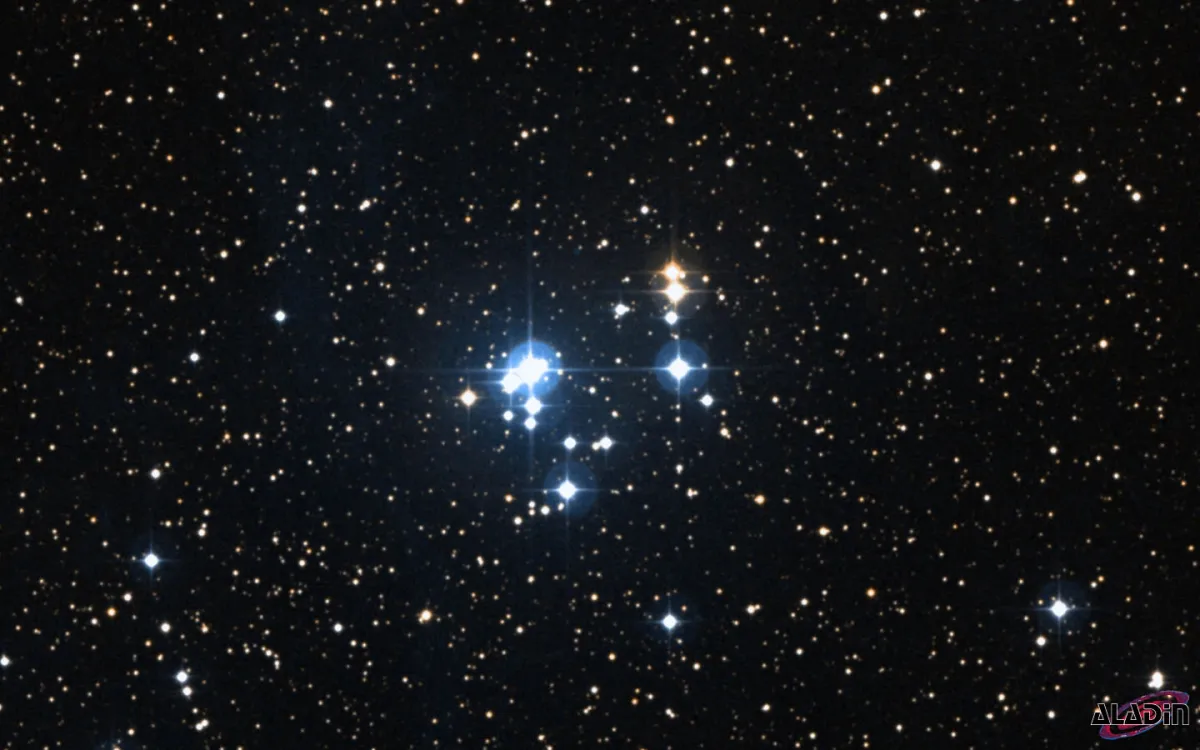37 Cluster (NGC 2169)

History
The cluster was probably first noticed by the Italian astronomer Giovanni Battista Hodierna, which published it in 1654. But this publication of his work was little noticed outside Sicily. [196] The cluster was rediscovered on 12 October 1782 by William Hershel using his little 6.2 inch telescope. He cataloged it as VIII 24 (class VIII = coarsely scattered clusters of stars) and noted: «A small cluster of pretty large white stars.» [463] In 1888 John L. E. Dreyer added the cluster with the designation NGC 2169 to his famous «New General Catalogue» [313]
In 1931 Per Collinder published his «Catalog of Open Galactic Clusters» where this cluster is listed as Collinder 83. [455] The cluster is also nicknamed «37 Cluster» due to its brightest members forming an asterism that looks like the number 37.
Physical Properties
The age of this rather young cluster is estimated to about 11 million years. [138]
| Designation | NGC 2169 |
| Type | OCL (I3p) |
| Right Ascension (J2000.0) | 06h 08m 24.3s |
| Declination (J2000.0) | +13° 57' 53" |
| Diameter | 6 arcmin |
| Visual magnitude | 5.9 mag |
| Metric Distance | 1.032 kpc |
| Dreyer Description | Cl, S, lRi, pmC, ** Σ 848 |
| Identification, Remarks | WH VIII 24; h 379; GC 1361; OCL 481 |
Finder Chart
The open cluster NGC 2169 is located in the constellation of Orion, which is best visible from August to May.
Visual Observation
400 mm Aperture: NGC 2169 offers a diverse and amusing sight with stars of different colours forming the shape of a «37» (or «λΣ» when upside down). One of the stars in the «3» is a binary star. — 400 mm f/4.5 Taurus Dobsonian, Hasliberg, 16. 12. 2023, SQM 21.2, Bernd Nies
